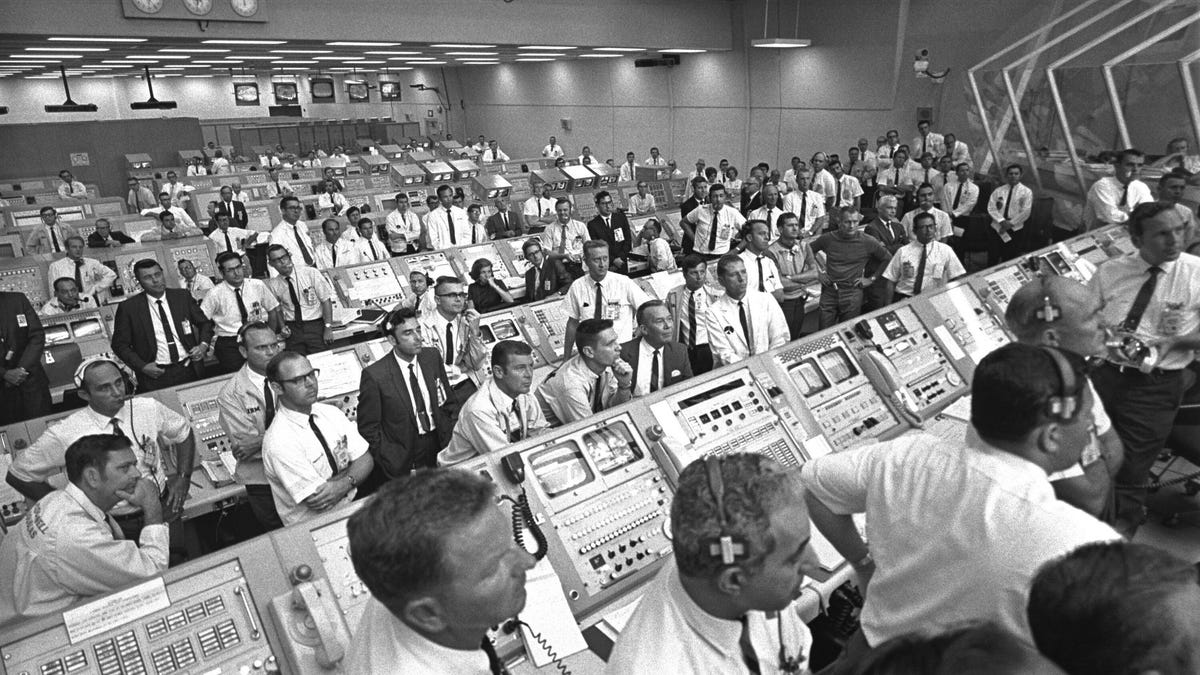Apollo 11's launch, as seen by the only woman in the control room
JoAnn Morgan witnessed history -- and made history -- in 1969 as she watched Apollo 11's liftoff from her console at NASA's Kennedy Space Center.

JoAnn Morgan was just 17 years old when she worked on her first rocket launch.
It was the spring of 1958, and Morgan had just graduated high school in Florida, just a few miles from the Space Coast. Keen to find a summer internship, Morgan saw an advertisement from the Army Ballistic Missile Agency looking for students to work in the missile firing lab.
NASA wouldn't officially open its doors until October that year (in accordance with a presidential order signed by Dwight Eisenhower), but the Soviet Union had just launched Sputnik 1 and the United States was playing catch-up. The Army was testing rocket systems to launch its first satellite, and it was short on labor. Morgan applied and got the job.
A week after she graduated, she was working at her first launch.
"It was awesome," she told me. "I just got rocket fuel in my blood right then and there."
By the next summer, the newly formed NASA had absorbed the missile launching program and Morgan became one of the agency's first women employees. Within a few years, she graduated from the University of Florida with a bachelor's degree, majoring in mathematics, got certified by NASA as a measurement and instrumentation engineer, and began working on the Mercury and Gemini programs.
JoAnn Morgan sitting at her console in the Launch Control Center.
And on July 16, 1969, Morgan was assigned to a console in the launch control facility at the Kennedy Space Center during the launch of Apollo 11. She was the only woman in the firing room. (You can get a good perspective on that in the photo at the top of the page. She's sitting in the third row of consoles, at the center.)
I spoke to Morgan about what it was like to go from being a summer intern to one of the most senior leaders at the Kennedy Space Center. I wanted to hear about life in the early days of the space race, when the United States was rushing to get a man on the moon, and when women were still a rare sight in the rank and file of NASA's engineers.
And I wanted to know what it was like to experience one of the 20th century's most historic moments firsthand.
This story is part of CNET's new podcast series Making Space: The Female Frontier, looking at the inspirational women who have shaped the history of space exploration.
"The space business is the most unforgiving business there is in the world," she said. "A liftoff is a controlled explosion. The landing is a controlled crash. Millions of things have to go perfectly, and that's why dress rehearsals were so critical, because we learned all of the things that we thought could go wrong. And we fixed them."
Warm and friendly, with a crackling voice and a bright laugh, she spoke to me over the phone from her home in Florida. But even telling me her story, all these years later, it was clear she was instantly transported back to the early days of her career.
This was a woman who, despite her excellent grades and internship with the military, was told by her university career counselor that she couldn't study engineering because "there are no women in the engineering school."
This was a woman who had to put up with sexist comments from colleagues and who had to walk to a separate building each time she needed to use the bathroom, because there were no women's bathrooms in the first building where she worked.
And this was a woman who went on to work at NASA for more than four decades, overseeing everything from moon landings to missions to Mars, eventually becoming the first woman to act as deputy director at the Kennedy Space Center and winning NASA's Outstanding Leadership Medal twice and Exceptional Service Medal four times.
She's a perfect example of the women who have shaped the history of space exploration.
I spoke to Morgan and the women who followed her in this field over the years, for CNET's new podcast Making Space: The Female Frontier. From the trailblazers who paved the way in a man's world, to the women leading the charge in the next space race as we send humans back to the moon and onward to Mars -- these women have built the field of space exploration from the ground up.
You can listen to my full conversation with Morgan in the player at the top of this story. And be sure to tune in every week for the next episodes in the series as we shed light on the women making space.
Listen and subscribe to Making Space: The Female Frontier on Apple Podcasts or wherever you listen.

